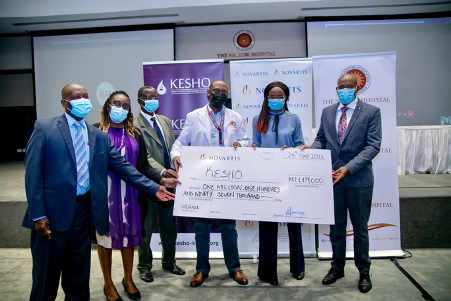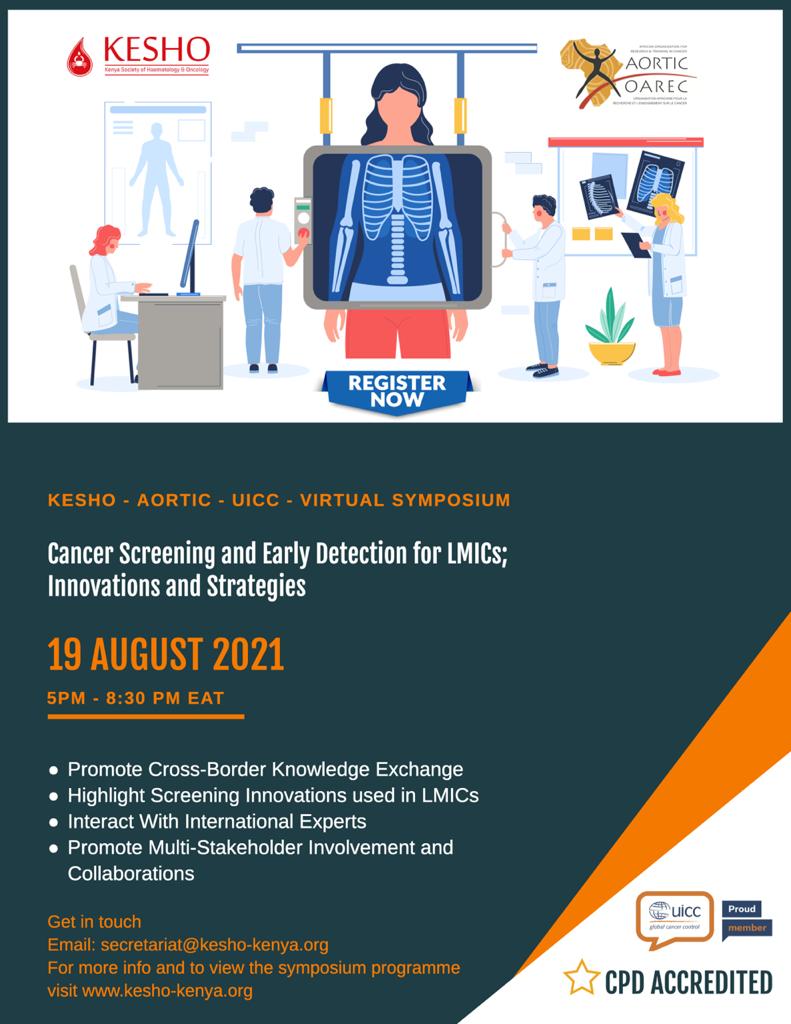CML Registry in Kenya

CML Registry in Kenya
As part of our core objectives KESHO seeks to promote research and increase availability of locally generated data.
We are honoured and proud to inform our members that KESHO has recently teamed up with the National Cancer Control Programme (NCCP), Ministry of Health Kenya, Novartis Kenya, The Nairobi Hospital and Henzo Kenya to establish Kenya’s first Chronic Myeloid Leukemia (CML) Registry. With rising prevalence of CML in Kenya, a disease registry specifically designed for CML will provide more accurate and comprehensive data and allow an in-depth study of the epidemiology and characteristics of CML in Kenya. The registry will be a resource for research and also strengthen the overall cancer registration system in Kenya. It is also important to determine the “real-world” clinical effectiveness of various drugs used in the management of CML, and monitor their side effects and long-term toxicities in a population-based approach. The data generated from the registry can be used for etiological research, primary and secondary prevention, health-care planning, policy formulation and improving clinical practice and patient care.
BACKGROUND
Non-Communicable Diseases (NCDs), including cancer are an emerging health problem in sub-Saharan Africa. WHO projects that cancers will be the leading cause of death globally by the year 2030.
Chronic Myeloid Leukemia occurs in all age groups but predominantly in adults. While there’s paucity of accurate data on leukemia from resource limited countries, data available from Globocan 2018 reports that the global incidence and mortality of all leukemia in 2018 was 437,033 and 309,006 respectively. In Africa, a much lower prevalence was reported in Globocan 2012 with a 5-year prevalence of 10,739 for all leukemia, with a mortality of 9483. In Kenya, the 5-year prevalence of all leukemia was 3845 with an annual incidence of 1699 and mortality of 1311. The number of new cases of leukemia in the country is expected to double by the year 2035. The Globocan dataset does not segregate leukemia into various subtypes. However, since CML constitutes 15-20% of all leukemia, it remains a significant global health burden.
CML is most common in older people, with the median age at diagnosis of 64 years. It is also more common in men than it is in women. Furthermore, it affects more whites and non-Hispanics than blacks. Mortality rates from CML are higher among older adults, however, the mortality rate has been on an average 1.5% each year from 2005 to 2014.
In Kenya, despite absence of accurate data on incidence and prevalence, the estimated total number of patients with CML under management within the Max Foundation Program is about 2000. The majority of CML patients are fairly young, with a median age of 42 years and a male to female ratio of 3:2. There appears to be no association with race or ethnicity though survival rates are most likely impacted by the availability of drugs and diagnostic technologies.
CML is an acquired rather than a hereditary abnormality. The initiating factors of carcinogenesis are unknown. However, exposure to ionizing radiation has been implicated due to the observed increase in prevalence among survivors of the atomic bombing. Other factors, thought to play a role, include cigarette smoking and obesity. A multivariate analysis of CML patients reported that being female, having a high level of education, and involvement in vigorous physical activity were inversely associated; whereas smoking intensity and body mass index were directly associated with increased risk. Dietary factors were not found to be associated with risk of CML. A study conducted in Kenya’s CML clinic at the Nairobi Hospital on the association between occurrence of CML and patients’ occupations, and also on personal and family history of cancer reported a chance familial association with other cancers.


Leave a comment